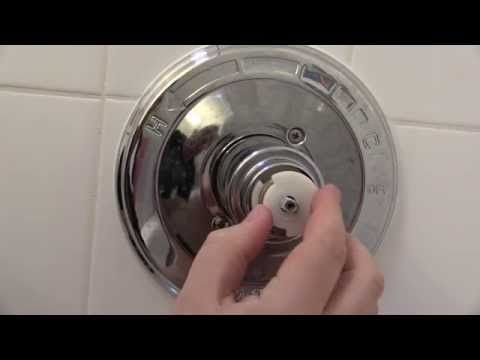In the fast-paced world of plumbing innovations, single-handle shower valves have emerged as a preferred choice for many homeowners due to their contemporary design and user-friendly interface. However, for those unfamiliar with the intricacies of these fixtures, adjusting water temperature can sometimes be a perplexing task. Fear not, as this comprehensive guide aims to demystify the process, providing you with the knowledge to effortlessly tailor your shower experience to your preferences.
1. Understanding Your Single Handle Shower Valve:
Modern plumbing fixtures have evolved to simplify our lives, and the single-handle shower valve is a testament to this progress. This valve, typically adorned with a singular lever, elegantly combines control over water flow rate and temperature into one accessible unit.
2. Locating the Temperature Adjustment Feature:
To embark on the journey of temperature customization, start by identifying the temperature adjustment feature on your single-handle shower valve. Whether it’s a circular dial, a lever, or a discrete button, this component is the gateway to achieving your desired water warmth.
3. Turning the Handle for Temperature Adjustment:
Once you’ve located the temperature adjustment feature, the process of tweaking the water temperature is often as simple as turning the handle left or right.
A widely accepted convention dictates that turning the handle counterclockwise increases the temperature, while a clockwise turn decreases it.
4. Finding the Comfort Zone:
Embark on a trial-and-error journey to discover your personal comfort zone. Initiate your quest with lukewarm water and make incremental adjustments until you find the temperature that best suits your preferences.
Opt for gradual turns to avoid sudden, uncomfortable changes.
5. Dealing with Anti-Scald Features:
Many single-handle shower valves boast anti-scald features designed to shield users from excessively hot water. If you encounter challenges increasing the temperature, investigate whether your valve has an anti-scald mechanism.
Adjust it according to the manufacturer’s instructions to regain control over the temperature.
6. Regular Maintenance for Optimal Performance:
To sustain consistent performance, integrate regular maintenance into your plumbing routine. Periodically check for leaks, cleanse valve components, and lubricate moving parts as recommended by the manufacturer.
This proactive approach ensures that your shower valve operates at its peak efficiency.
7. Troubleshooting Common Issues:
Even the most reliable fixtures may encounter issues over time. If you experience difficulties with temperature adjustments—such as erratic water temperatures or a stiff handle—refer to your user manual for troubleshooting guidance.
Common problems could include sediment accumulation or a worn-out cartridge that requires replacement.
FAQs:
Q1: Why is my single-handle shower valve not adjusting temperature smoothly?
A1: Several factors could contribute, such as sediment buildup, a malfunctioning cartridge, or issues with the anti-scald feature. Consult your user manual for step-by-step troubleshooting instructions.
Q2: Can I adjust the temperature if my shower valve has an anti-scald feature?
A2: Yes, you can still customize the temperature, but you may need to override or adjust the anti-scald setting. Check your user manual for precise instructions.
Q3: How often should I perform maintenance on my single-handle shower valve?
A3: Regular maintenance is advised every six months. This involves inspecting for leaks, cleaning components, and lubricating moving parts to ensure optimal functionality.
Q4: What should I do if my shower water is too hot, despite turning the handle to the cold side?
A4: This could indicate a problem with the valve or cartridge. Investigate for malfunctions and consider seeking the assistance of a professional plumber.
Q5: Are there any safety precautions I should follow when adjusting the water temperature?
A5: Begin with lukewarm water to prevent sudden temperature changes, especially if you have sensitive skin. Exercise caution to avoid scalding and ensure a safe and enjoyable shower experience.
Conclusion:
Adjusting the water temperature on your single-handle shower valve need not be a daunting task. Armed with a basic understanding of your fixture, routine maintenance practices, and troubleshooting knowledge, you can take control of your shower experience. Should challenges persist, don’t hesitate to enlist the expertise of a plumbing professional to ensure your shower remains a sanctuary of comfort and relaxation.

A group of home improvement enthusiasts and bathroom design experts, combines in-depth knowledge and a shared passion to deliver engaging, informative content that guides readers through the world of bathroom innovation and style.

Leave a Reply